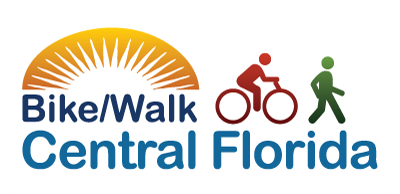Lauren Torres
Lauren Torres is a dedicated professional passionate about making our roads safer and more accessible for everyone. With a wealth of experience and a commitment to excellence, she has become a prominent figure in transportation safety and advocacy.
As a Member of the MPO’s Vision Zero Central Florida Task Force, Lauren is at the forefront of efforts to eliminate traffic-related fatalities and injuries in her community. In her current role at the National Safety Council (NSC), she not only represents and manages the NSC’s position as the sponsoring member of the National Committee on Uniform Traffic Control Devices (NCUCTD) but also serves as a sub-group co-lead of the National Safe Systems Approach working group. This group is a vital part of the Road to Zero coalition, led by NSC in partnership with the U.S. Department of Transportation (DOT), dedicated to achieving zero traffic deaths on our nation’s roads.
Lauren’s commitment to pedestrian and bicycle safety is evident in her past achievements at the Orange County, Florida, Government. Under her leadership, her team was honored with the first FDOT District 5 Award for Excellence in Pedestrian Safety and Engineering. Notably, she oversaw the installation of the first raised crosswalks at school crossings in the county. She was the project manager on the team that designed the county’s first pedestrian signal. She ensured that every resurfacing project was carefully evaluated for adding pedestrian improvements and bike lanes, further enhancing safety for all road users. As project manager for the lane re-designation project on Rio Grande Ave, she laid the groundwork for a separated bike lane set for construction later this year.
Lauren played a vital role in shaping the future of her community through her involvement in developing the new Orange Code Land development code. She served as an active committee member representing public works, and her contributions ensured that crucial elements such as context classification, roadway safety, and pedestrian and bicyclist safety strategies were included in the new code, making a lasting impact on Orange County’s future infrastructure and safety.
Why are you devoting your time to this cause?
I have always been passionate about pedestrian and bicyclist safety, specifically for our most vulnerable users. There is a need in Central Florida to provide safe, efficient, and reliable means of transportation outside of cars to many low-income communities and communities with high populations of disabled or elderly people.
My experience with BWCF has shown me that this organization can help make these changes, and I want to do everything I can to help push these objectives forward and make a real difference in our community.
What is your earliest memory of biking or walking?
As a very young child, I walked and took a public bus to attend first grade. I was considered a latchkey kid, and my parents worked. Therefore, I had to learn early how to get to school and back home on my own. This is why ensuring school children have access to safe sidewalks and trails, especially in our economically challenged communities, is so important to me.
In 15 years, what does this region look like?
I see a transportation system with dedicated and separated bus lanes, commuter rail that reaches all sections of the area, fewer vehicular lanes, and more trees to provide shade to walkers and bikers. Larger sidewalks and logical trail connections to hubs of bossiness and activity. Not just in new and affluent areas but in economically challenged urban and rural areas as well. I would like to see an elderly person or someone with disabilities be able to perform daily necessary trips without the need for a car.

